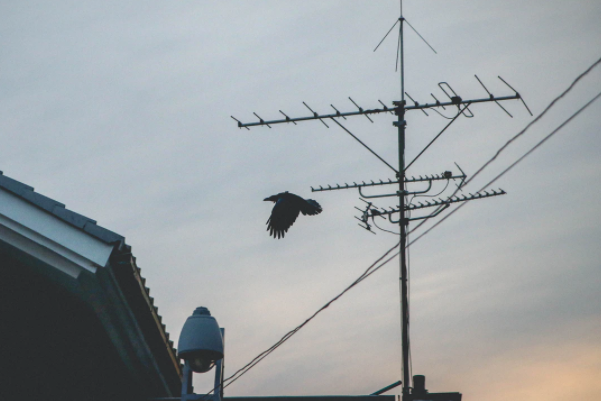 While they might strike as a stale, outdated technology, TV antennas are still a widely popular option across the American landscape. If you love watching your favorite programs and channels for free (minus the costs for electricity) and in high quality, you may very well benefit from equipping your home with an antenna, rather than choose a costly cable or satellite monthly subscription service. In the following guide, we go over everything to consider when it comes to installing and selecting the ideal TV antenna for your home in New York City and its suburbs.
While they might strike as a stale, outdated technology, TV antennas are still a widely popular option across the American landscape. If you love watching your favorite programs and channels for free (minus the costs for electricity) and in high quality, you may very well benefit from equipping your home with an antenna, rather than choose a costly cable or satellite monthly subscription service. In the following guide, we go over everything to consider when it comes to installing and selecting the ideal TV antenna for your home in New York City and its suburbs.
Understand the Benefits of HDTV Antennas
There are several advantages to using a traditional antenna. Essentially, their job is to pick up over-the-air signals that get you free reception; they are money-savers by default. After all, why should you pay for channels that are broadcasted for free? And while cable and satellite services win by a landslide as far as channel offering, with an antenna, you have access to local sub-channels that aren’t provided by those two paid setups.
Watching television in 1080p resolution has become a no-brainer nowadays. Fortunately, TV antennas work in such a way that the signal you receive at home is uncompressed and of high image and sound quality. That said, if you’re worried that the Big Apple’s capricious weather will affect your TV signal, you won’t need to trouble yourself over this with a traditional antenna. Doesn’t all this sound convenient?
Check the Available Channels in Your Area
Before scouring the web for the best TV antenna out there, it’s important that you take the time to research the channels available in your area. Generally speaking, major cities across the United States will offer anywhere between 50 and 100 free TV stations for antenna-equipped homes. Among those will be popular public broadcasts like PBS, and major commercial channels like ABC, CBS, and NBC. In any case, be sure to find a website that will enable you to determine which over-the-air channels you have access to using your zip code. It’s as simple as a basic web search!
Know More About the Best Types of TV Antennas
It’s easy to feel overwhelmed when you’re on the hunt for a TV antenna. While they all pretty much fulfill the same goal of getting you a free TV reception, there are countless options to choose from; digital, multidirectional, omnidirectional, UHF, VHF, etc. And as the reviewers from https://longrangesignal.com/ point out, your choice will mainly depend on your proximity to transmitter towers (where the signals are emitted from), as well as the availability of channels.
For instance, the ‘green’ channels (those closest to you) can be received with an indoor antenna, the ‘yellow’ ones require a bigger attic antenna, while ‘red’ channels will require a more powerful roof-mounted antenna. Regardless of whether you’re looking to acquire a compact indoor model or a far-reaching roof-mount type, you’ll find suitable recommendations by consulting online reviews and comparative guides.
Learn About Antenna Installation Regulations
Putting up a TV antenna outside your apartment or home is subject to local regulations that cannot be overlooked. Whether you live in a two-bedroom flat in Brooklyn or a studio apartment on the Upper East Side, make sure to contact the city’s broadcasting authorities to check their requirements and comply with the laws in effect. For safety and practical purposes, you may even be asked to have your new antenna installed by a licensed professional. Failing to do so may expose you to hefty fines and other problems. This rule applies all over the world when it comes to installations. For example, you can pull a DIY service on your TV aerial installation in London, but it will still require you to have a license for it to be used for broadcasting.
Make Sure You Maximize Your TV Reception at Home
Lastly, but importantly, despite a fitting purchase, you may experience difficulties getting a stable and consistent reception. Fortunately, there are simple ways to optimize the signal power you receive at home for a trouble-free viewing experience. Notably, many people opt for an amplifier to boost their reception. These can be integrated directly into the antenna, especially for indoor ones, or stand as a separate device that you connect yourself. Seek advice from a professional installer, a specialized shop owner, or your neighbors to find out whether you actually need an amplifier. More often than not, a high-quality and well-positioned antenna will suffice for you to get an optimal signal.

Ultimately, a TV antenna is a convenient solution to enjoy the pleasures of free, over-the-air broadcast television. If you’re on a tight budget, as many fellow cosmopolitans in an expensive city like New York, cutting the cord and installing a traditional antenna can save you hundreds of dollars every year while letting you enjoy your favorite programs. At the end of the day, conduct some research and keep documenting yourself to find out which model of the antenna will best suit your location and needs.
Become a Harlem Insider!
By submitting this form, you are consenting to receive marketing emails from: . You can revoke your consent to receive emails at any time by using the SafeUnsubscribe® link, found at the bottom of every email. Emails are serviced by Constant Contact








